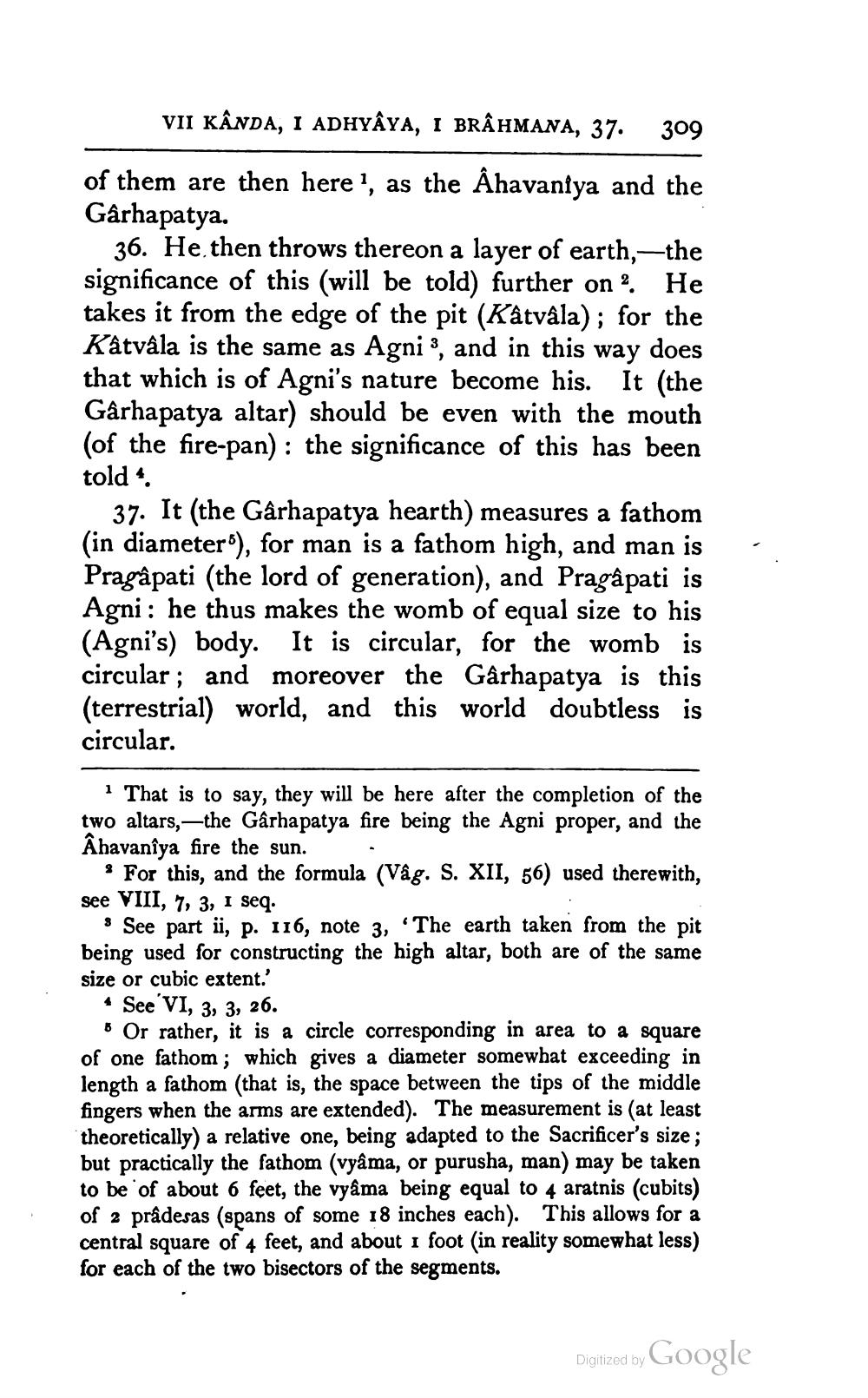________________
VII KÂNDA, I ADHYAYA, I BRÂHMANA, 37. 309 of them are then here !, as the Ahavaniya and the Gârhapatya.
36. He, then throws thereon a layer of earth,—the significance of this (will be told) further on 2. He takes it from the edge of the pit (Kátvála); for the Katvala is the same as Agni 3, and in this way does that which is of Agni's nature become his. It (the Garhapatya altar) should be even with the mouth (of the fire-pan) : the significance of this has been told 4.
37. It (the Gârhapatya hearth) measures a fathom (in diameter'), for man is a fathom high, and man is Pragâpati (the lord of generation), and Pragâpati is Agni: he thus makes the womb of equal size to his (Agni's) body. It is circular, for the womb is circular; and moreover the Gârhapatya is this (terrestrial) world, and this world doubtless is circular.
? That is to say, they will be here after the completion of the two altars,—the Gârhapatya fire being the Agni proper, and the Âhavanîya fire the sun. .
For this, and the formula (Våg. S. XII, 56) used therewith, see VIII, 7, 3, I seq.
8 See part ii, p. 116, note 3, "The earth taken from the pit being used for constructing the high altar, both are of the same size or cubic extent.'
See'VI, 3, 3, 26. o Or rather, it is a circle corresponding in area to a square of one fathom; which gives a diameter somewhat exceeding in length a fathom (that is, the space between the tips of the middle fingers when the arms are extended). The measurement is (at least theoretically) a relative one, being adapted to the Sacrificer's size; but practically the fathom (vyâma, or purusha, man) may be taken to be of about 6 feet, the vyama being equal to 4 aratnis (cubits) of 2 prâdesas (spans of some 18 inches each). This allows for a central square of 4 feet, and about 1 foot (in reality somewhat less) for each of the two bisectors of the segments.
Digitized by Google




